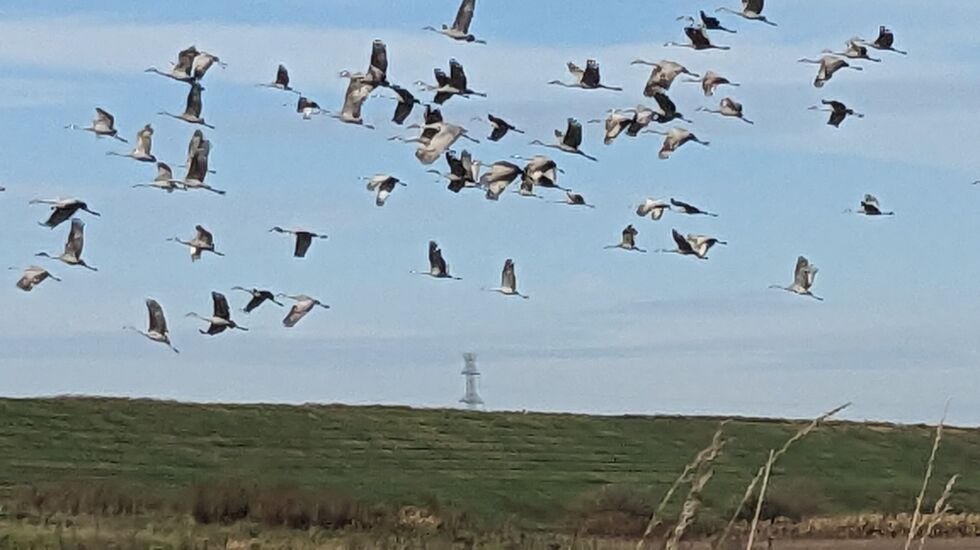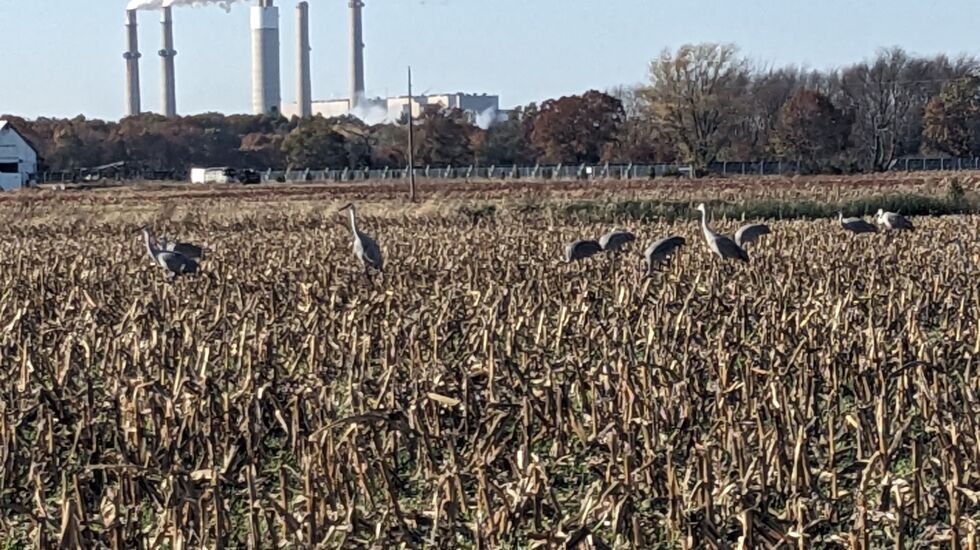
WHEATFIELD, Ind.—Three odd dark birds bobbed in a just picked cornfield. Combines were literally chopping stalks a couple hundred yards east in the same field northwest of Medaryville.
I pulled over so John Vukmirovich could put his binoculars on them.
“They’re not sandhills,” he said and handed the glasses to me.
I saw white on the head of one. It was a mature bald eagle with two immatures.
“Last year, the surprise was that red-headed woodpecker; this year, those three bald eagles,” he emailed later.
Most years we visit Jasper-Pulaski Fish and Wildlife Area southeast of Valparaiso to view the migrating sandhill cranes and hope for a glimpse of whooping crane (so far we blanked on that).
This was our earliest visit ever [Nov. 2], first time visiting before time change. We had high hopes, thinking the snow and cold front on Halloween might spark a big push. (On our drive there, some areas in Indiana still had snow piled.)
Oh, we saw sandhills, but no where near our usual numbers.
Part of that was many of our usual prime fields had unpicked corn or were being picked.

The biggest question is the impact of the largest solar farm in the United States being constructed around the power plant near Wheatfield the last two years. Will sandhills coming to the shallow marshes around J-P change their patterns? It will take years to determine if sandhill numbers continue to peak around 30,000 in late November or early December.
We knew going this early would be dicey. The weekly count on Halloween (fall counts are usually on Tuesdays) was only 6,379. It was only 7,662 on Wednesday.

We didn’t see our first sandhills until 1 p.m. It would be our biggest group of the day, about 500 near water southeast of the power plant. Interestingly, it was near a big solar field being constructed. Other than some that we spooked there, we didn’t see sandhills flying other than a relative few when we climbed the viewing tower at J-P hours later.
“When there are cranes airborne, moving from field to field, flock to flock, or just arriving, they form a living network with the cranes on the ground,” Vukmirovich emailed upon reflection. “They are all communicating aurally and visually. When the network is `up,’ those fields are lively. When the network is `down,’ like [Nov. 2], well, we saw the result. The more I think about this, with past years in mind, I’m convinced its important whether there are cranes in the air.”
For the first time, we left the viewing tower before sunset.
It was time.
Driving home on Indiana backroads was easier in daylight.
We totaled 1,300 sandhills in the fields driving around, but only saw 400 from the tower. We only saw one deer, jumping a ditch into a cornfield, and no turkeys.
Best time for viewing the sandhills from the tower is the hour before sunset. I recommend going around Thanksgiving weekend and combining it with something else like we did visiting Gabis Arboretum. Details on visiting J-P are at in.gov/dnr/fish-and-wildlife/properties/jasper-pulaski-fwa/sandhill-cranes/.








